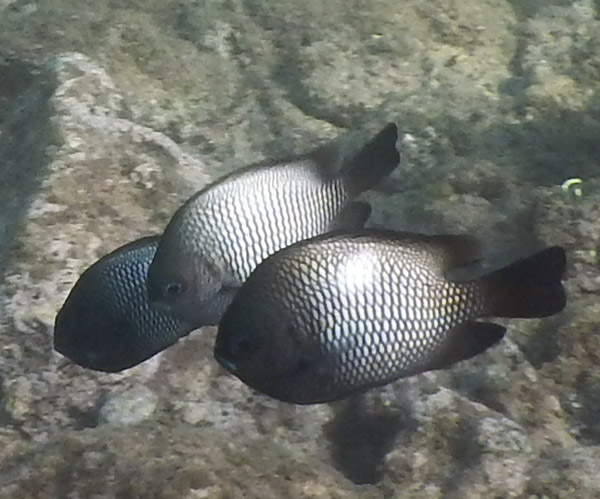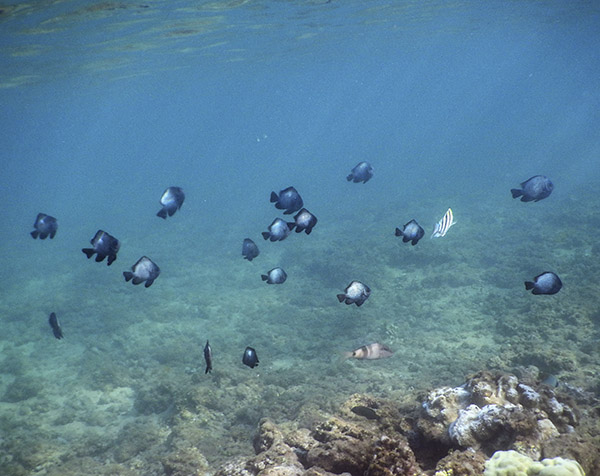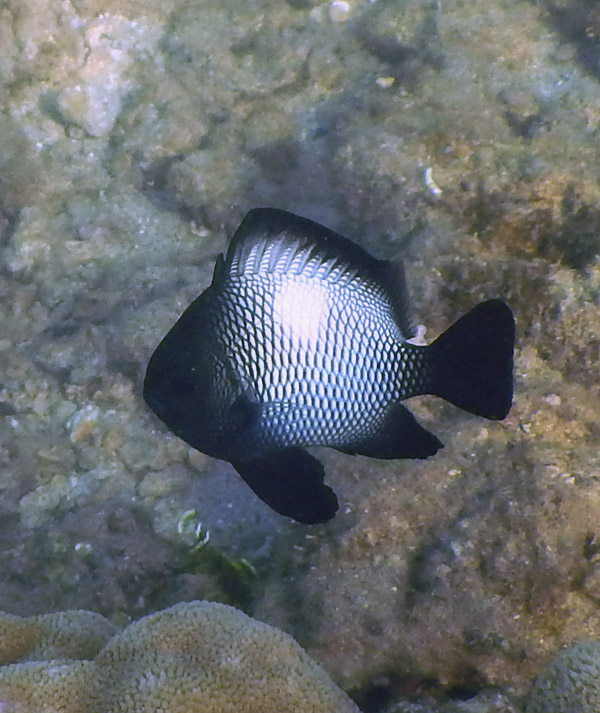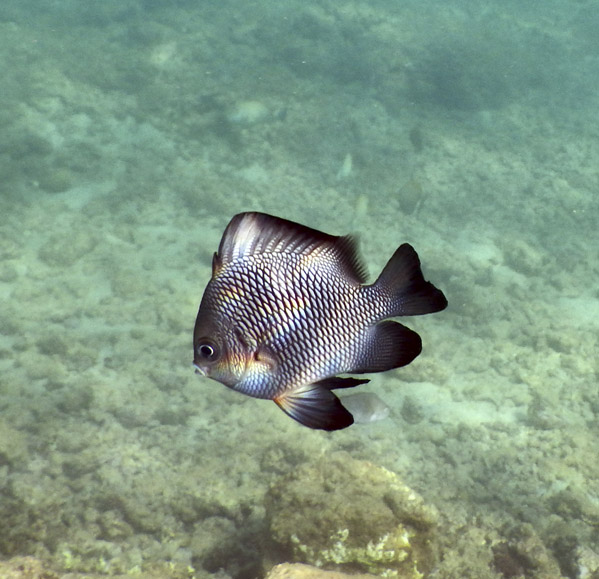Published in the Ocean Watch column, Honolulu Star-Advertiser © Susan Scott
April 13, 2015
While snorkeling last week, I noticed that some Hawaiian dascyllus were mostly gray, some were nearly all white, and further on, they were black with a white spot on each side.
 Dascyllus albisella, or, in Hawaiian, aloiloi.
Dascyllus albisella, or, in Hawaiian, aloiloi.
©2015 Susan Scott
The name Hawaiian dascyllus doesn’t tell you what kind of marine animal I’m talking about, and even if you know Greek, you still don’t get much of a clue. The generic term dascyllus (da-SILL-us) means “a kind of fish.” And the species name of the Hawaiian dascyllus, albisella, is equally nondescript. It means “white.”
Even though I see different colors and patterns in this fish, I know it’s the same species because Hawaii has only one dascyllus. (Eight others occur in the Indian and Pacific oceans.) But the distribution of black, white and gray in individuals varies widely.
The Hawaiian dascyllus, sometimes called the Hawaiian domino damselfish (more descriptive but a mouthful), reminds me of a fish-shaped beverage coaster. The flat, roundish species grows to 5 inches long.

Juvenile dascyllus usually hover in schools just above branching corals, but long-spined sea urchins and crown-of-thorns starfish are also favorite hangouts. At the approach of a predator (or snorkeler), the babies dive to safety inside the coral’s narrow corridors or among the urchin’s or starfish’s sharp toxic spines.
Some adult dascyllus spend their entire lives in the arms of antler coral, venturing out to graze on passing plankton. Other adults throw caution to the current and live in the open, using cracks and crevices in nearby rocks and reefs as emergency shelter.
The juvenile Hawaiian dascyllus is black with a brilliant white patch on each side and a neon-blue spot on the forehead. As the fish gets bigger, it loses the headlight and its white side spots fade.

As an adult, the Hawaiian dascyllus changes patterns to suit the occasion. When courting, the fish’s sides turn bright white, while the head, fins and tail are all black.
Dining calls for different attire. When feeding, the fish’s sides are white, but the edges of the scales there darken, giving the fish a gray mesh look, as if it’s wearing a shirt of chain mail.
When threatened, adult dascyllus revert to their juvenile colors of all black with bright white side spots.
After reading up on dascyllus colors, I went back to my snorkeling site to match patterns with behaviors, but I couldn’t tell what those perky little fish were up to. All I knew as I watched them dart here and there in their assorted black-and-white outfits was that the ancient Hawaiians had it right when they named the fish “aloiloi.” It means “bright and sparkling.”
